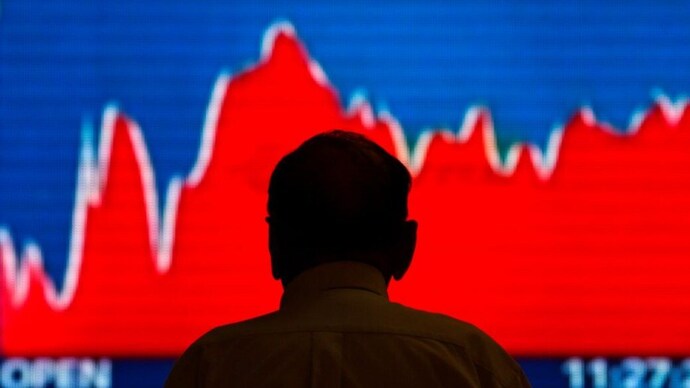Explained: Why Dalal Street turned gloomy after RBI rate decision
The S&P BSE Sensex fell over 335 points to 65,660, while the NSE Nifty traded 93 points lower at 19,539 at around 2:50 pm.

In Short
- Stock indices drop post RBI's unchanged rate decision and hawkish stance
- Key lending rate remains at 6.50%
- RBI's incremental CRR of 10% affects market sentiments on Dalal Street
Benchmark stock market indices fell on Thursday after the Reserve Bank of India’s monetary policy decision.
The S&P BSE Sensex fell over 335 points to 65,660, while the NSE Nifty traded 93 points lower at 19,539 at around 2:50 pm. Broader market indices also tumbled soon after RBI Governor Shaktikanta Das announced the rate decision.
Hawkish stance, CRR decision
While the central bank’s Monetary Policy Committee (MPC) decided to keep the key lending rate unchanged at 6.50 per cent, the central bank governor raised concern about the evolving inflation situation and maintained a hawkish stance.
Simply put, the RBI has left the door open for future rate hikes.
The RBI’s decision was in line with expectations, but the guidance indicated that the key repo rate will remain elevated for a prolonged period and any expectations of a rate cut would be pushed back further.
Although Governor Das did not directly imply that there could be future interest rate hikes, he said that the central bank would be prepared to act in case the situation demands more rate tightening.
RBI’s decision to impose an incremental Cash Reserve Ratio (CRR) of 10 per cent of net demand and time liabilities (NDTL) seems to have hurt sentiments on Dalal Street.
“It has been decided that with effect from the fortnight beginning August 12, 2023, scheduled banks shall maintain an incremental cash reserve ratio (I-CRR) of 10 per cent on the increase in their net demand and time liabilities (NDTL) between May 19, 2023 and July 28, 2023,” Shaktikanta Das said.
“This measure is intended to absorb the surplus liquidity generated by various factors referred to earlier including the return of Rs 2,000 notes to the banking system. This is purely a temporary measure for managing the liquidity overhang. Even after this temporary impounding, there will be adequate liquidity in the system to meet the credit needs of the economy,” he said.
The decision will be reviewed on September 8, 2023 or earlier with a view to returning the impounded funds to the banking system ahead of the festival season, Das added.
Vikas Garg, Head of Fixed Income, Invesco Mutual Fund, said, “Incremental CRR requirement a tad negative, though for a short time only. Overall, a well-balanced policy on expected lines with remote likelihood of any more rate hikes for now. A long wait for a rate cut cycle as the MPC re-iterates its commitment on 4 per cent inflation target.”
“The decision to increase the incremental CRR by 10 per cent on net demand and time liabilities of Scheduled Commercial Banks reinforces the hawkish stance of the central bank and its unwavering commitment to manage liquidity and realign inflation with its target,” said Dr Esha Khanna, Associate Professor, NMIMS Sarla Anil Modi School of Economics.

